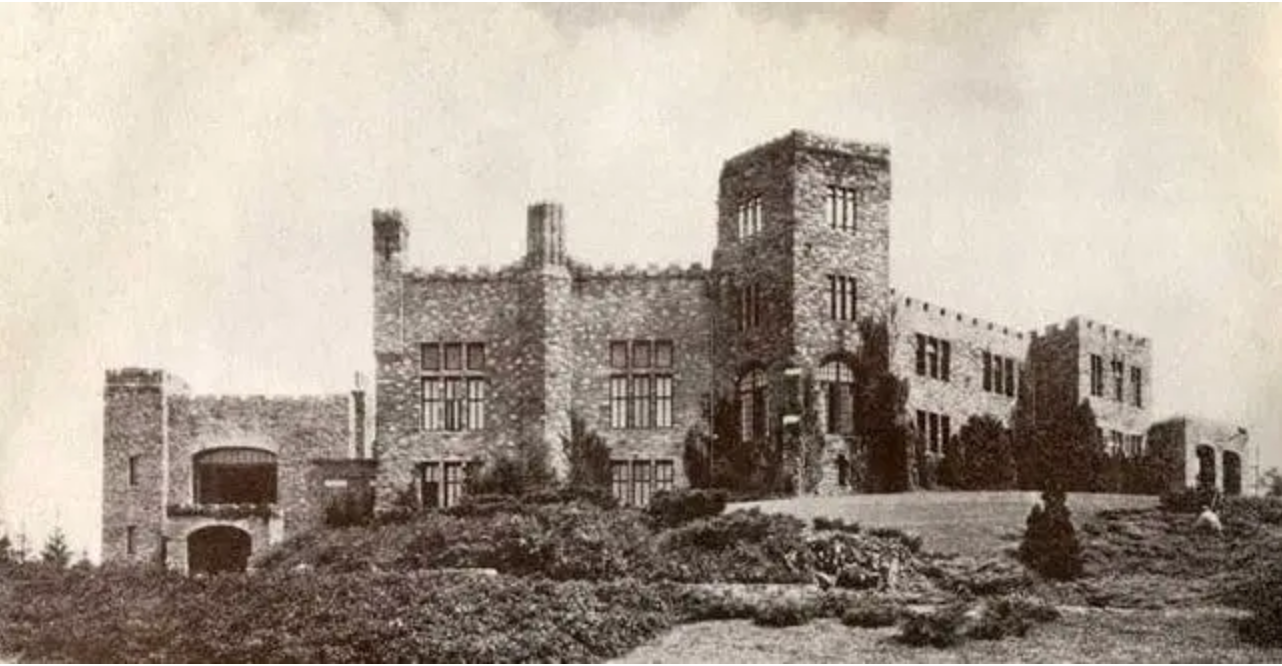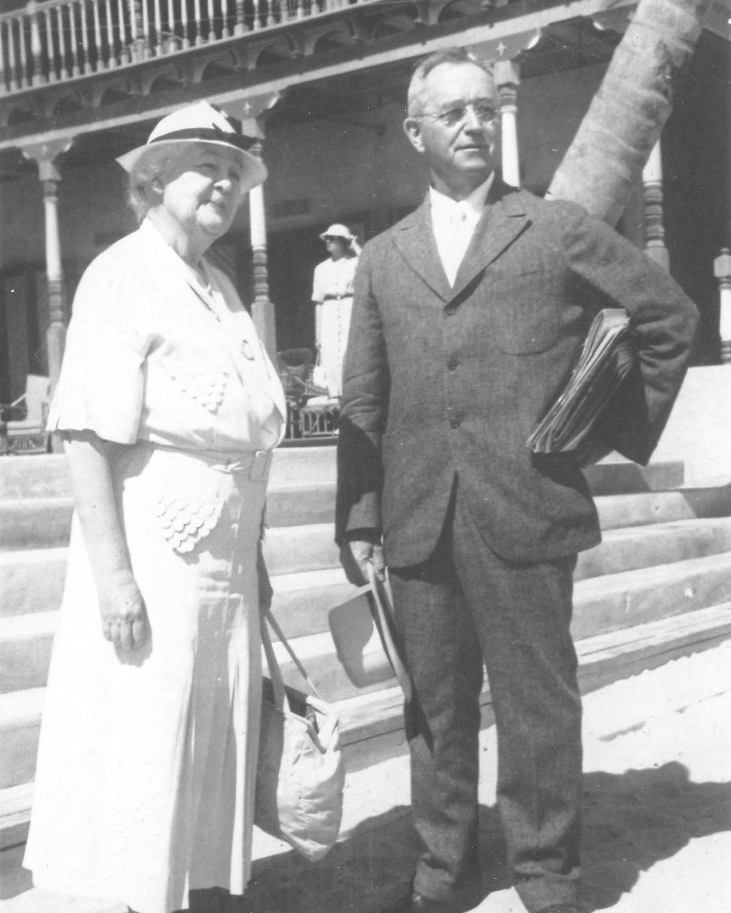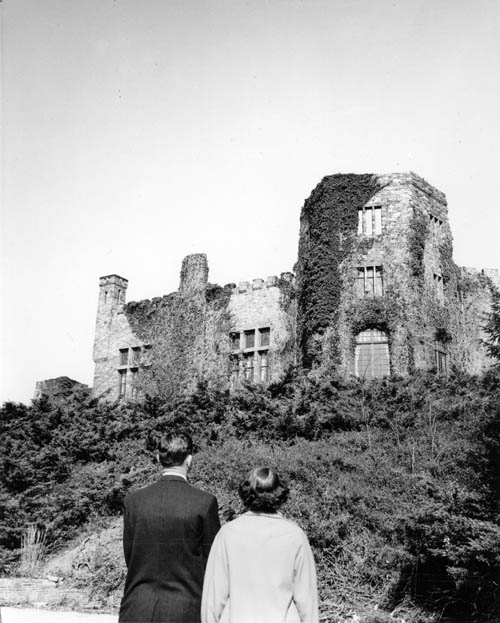Overlook — located on Sunset Mountain (and visible in winter from the Tunnel Road Ingles parking lot) — was constructed by Fred Seely beginning in 1914. It “took a decade to complete, though he, his wife, and five children moved in by about 1916, when it was still a work-in-progress,” wrote WNC Magazine.
Seely was the architect of the Grove Park Inn, and the son-in-law of Grove park owner, E.W. Grove. It was Grove who gave Seely the 29-acre tract in Sunset Mountain, which had previously been a the site of a casino and picnicking spot. There, Seely constructed a 20,000-square-foot English Gothic-style castle.

It’s believed that Overlook Mansion was inspired, at least in part, by an overabundance of stone. Seely oversaw the construction of the Grove Park Inn, which was build from native granite, quarried from Sunset Mountain. Seely had insisted that only larger stones be used to minimize the amount of mortar joints necessary. That left a lot of smaller stones in need of a purpose.
Overlook was described as “one of Asheville’s most pretentious private residences,” in the 1980 nomination for National Register of Historic Places designation. “In the courtyard are a fishpond and fountains. … The grounds were originally furnished in the English Country Manor style and some of those planting remain. In the fashion of the Englishman’s country estate, deer roamed freely about the grounds until 1929.”
Other features of the property were:
- A Tudor mantel in the library which came from an English manor once owned by Queen Victoria.
- In the Great Room, with 32-foot-high ceilings and massive beams made from whole trees, a stone from the Tower of London and a piece of the Blarney stone were set into the fireplace.
- In the bedrooms, the closet doors were wired by Thomas Edison with switches that automatically turned the lights on when the doors were opened.
- The lions on each side of the tunnel entrance are said to have been from the courthouse in Atlanta that Sherman’s army burned down during the Civil War.


After Seely’s death in 1942, his wife Evelyn moved to the Battery Park Hotel in downtown Asheville (which had also been built and owned by her father). In 1949, she sold Overlook to Asheville-Biltmore College, “for a mere $125,000. She donated $50,000 of that sum to assist the purchase,” wrote WNC Magazine.
Asheville-Biltmore College — first known as Buncombe County Junior College — was established in 1927 by William Henry Jones, the principal of Biltmore School near Asheville, and Alonzo Carlton Reynolds, the Buncombe County Schools superintendent. It was first public junior college in the United States to offer free tuition,” according to NCPedia.
The school underwent several name changes, mergers with local governments and school systems, and moves before relocating in 1961 to its present campus in north Asheville, explains the UNC Asheville website. “Asheville-Biltmore College joined The University of North Carolina system in 1969 as the University of North Carolina Asheville, with the distinct mission to offer an excellent undergraduate liberal arts education.”
